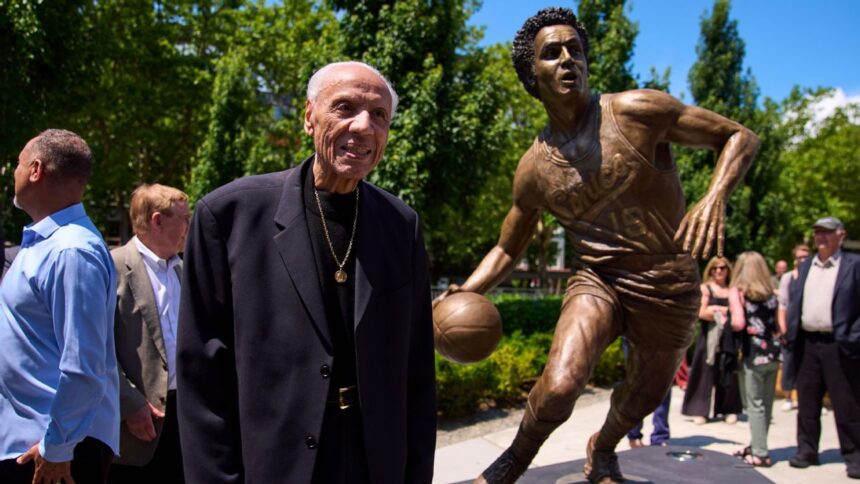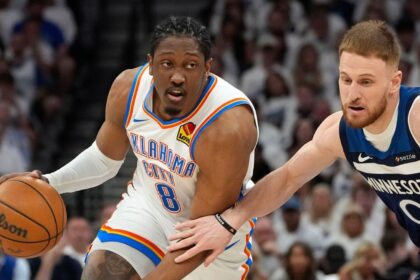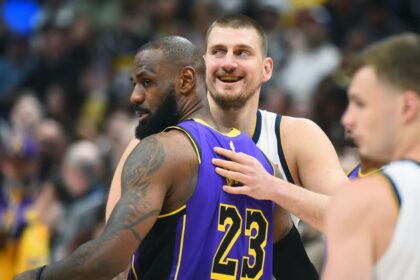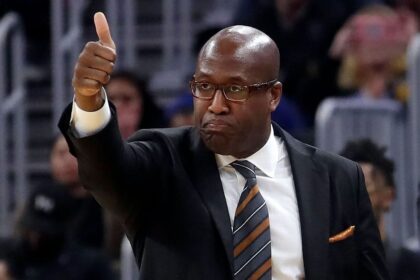The Seattle basketball community gathered on Saturday to honor Lenny Wilkens, basketball legend, former player, coach, and executive for the Seattle SuperSonics. Wilkens became the first person to have a statue unveiled outside Climate Pledge Arena.
On Saturday, the recognition went to Wilkens, who joined John Wooden as the second person selected for the Naismith Memorial Hall of Fame as a player (in 1989) and as a coach (in 1998), before being honored for a third time for his role as assistant coach of the 1992 United States Olympic “Dream Team”. Although he played for four teams and coached six, Brooklyn native Wilkens has made Seattle his home and is most associated with the Sonics. As head coach in 1979, Wilkens led the team to its only championship in Seattle. Each speaker on Saturday highlighted that Wilkens’ work off the court in the Seattle community is an equally important part of his legacy. Through his foundation, created in 1971, Wilkens spent decades supporting local causes, especially the Odessa Brown Children’s Clinic, which operates in Seattle’s historically Black Central District.“It reminds me of when I arrived here,” said Wilkens, who was transferred to the Sonics in 1968 before their second season as an expansion franchise. “You know, we are a better community when we support each other, when we help each other, when we take the time to recognize each other.”
Lenny Wilkens

“I feel his impact every day and he has touched many, many people,” Schrempf said. “He is a special person. We are fortunate to have him in our community.”
Detlef SchrempfNate McMillan, like Wilkens, a player and head coach in Seattle, said that Wilkens “set the standard for what a SuperSonic should be both on and off the court.” “How you should play the game and for me, how I should coach the game,” McMillan said. “Ok, I couldn’t be as smooth as you on the sideline, but the respect for the game, the respect for the community, the respect for the league, all of that I learned from you.” All of that made Wilkens, whose participation with the Sonics spanned all the decades of their existence, except for the 1990s, the natural choice as the first player honored with a statue at Climate Pledge Arena, which is located in the same place as the Seattle Center Coliseum, where Wilkens played. A Wilkens will soon be joined by Seattle Storm’s escort, Sue Bird. The Seattle Times reported on Saturday that a statue of Bird will be unveiled at the August 17 game against the Phoenix Mercury. “Coach Wilkens is what Jerry West was to the Lakers and the NBA,” McMillan said, highlighting other players with statues. “It’s what Bill Russell was to the Boston Celtics and the NBA. It’s what Michael Jordan is to the Chicago Bulls and the NBA. This is our Hall of Famer.” The sculptor Lou Cella was responsible for bringing Wilkens’ statue to life. Previously, he created statues of Seattle sports icons Ken Griffey Jr., Edgar Martinez, and Dave Niehaus at T-Mobile Park and Don James at Husky Stadium. Basketball Hall of Famer Spencer Haywood, who began his NBA career in Seattle with Wilkens, highlighted the only complaint: The statue depicts Wilkens, famous for relying on his left hand as a player, driving to the right. Underlying Saturday’s event was the excitement for the possible return of the Sonics. NBA Commissioner Adam Silver said earlier this month at the NBA Finals that the league’s Board of Governors will address the issue of expansion at next month’s meetings in Las Vegas. “I hope the NBA is watching,” McMillan said. “They really need to pay attention to this because we have a rich tradition, and Coach Wilkens is a big part of that tradition.”











